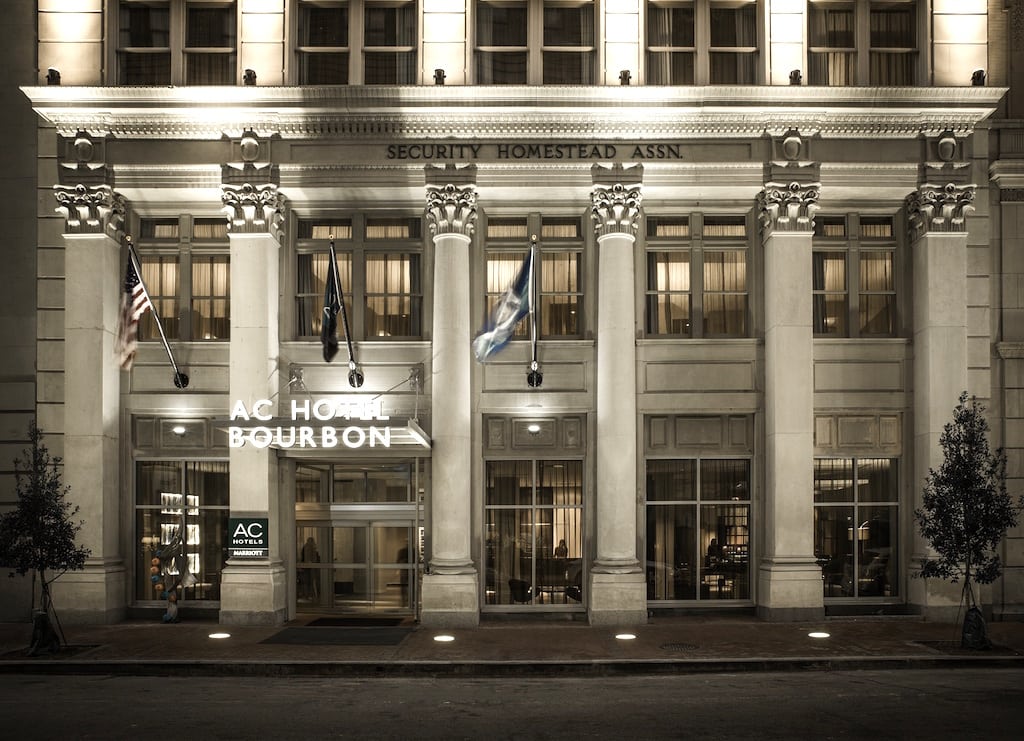Marriott Wants to Introduce AC Hotels to the U.S. as New Kind of Upscale Brand

Skift Take
Well established in Europe, the AC Hotels by Marriott brand migrated to the U.S. for the first time with the opening of the 220-room AC Hotel New Orleans Bourbon in November.
A lot of new design-forward lifestyle hotel groups launched in 2014, and we’ve covered them all, but this one just might be the most intelligently positioned. AC Hotels is primarily an upscale business hotel brand in the select service category, with an approachable average daily rate and a trendy design mission defined as “European-inspired classic modernism.”
Basically, Marriott is promoting AC as a brand new hospitality tier, and that market segment differentiation is apparently resonating with owners.
According to Toni Stoeckl, VP of lifestyle brands at Marriott Hotels, there are presently “almost 60 agreements" in place for new AC projects in the Americas. Miami, Chicago, Kansas City and Washington, DC are scheduled to open within the first half of 2015.
The select service hotel category has been the lonely stepchild of the hospitality industry forever, from a consumer point of view. However, many travelers today are eschewing the non-essential in their accommodations, while shifting their budget priorities toward more immersive destination experiences.
So a select service hotel might be an obvious consideration for consumers to save money, but it’s never been an entirely attractive option for people who value trendy design. And seemingly almost everyone today values trendy design.
“In mid 2013, we decided to bring the brand to the U.S. because we saw a great opportunity within the lifestyle space in a whole new upscale tier,” says Stoeckl. “We thought it would be a great fit given the fact that many of our consumers are next generation consumers who appreciate forward design, and Gen X and Y are growing in terms of their overall traveling population.”
Behind the Brand
With 76 hotels operating across Europe, AC Hotels was first conceived in 1998 by Spanish hotelier Antonio Catalan, who says he was originally inspired by the fashion houses of Milan. In 2011, Catalan entered into a joint partnership with Marriott Hotels.
That European fashion influence informs AC Hotels’ focus on conscientious lines, human scale, attention to detail, and a defined user experience. How well the individual hotels stay true to that vision remains to be seen, but hotel owners and developers today are much more aware that good design drives hotel bookings than even a few years ago.
“In terms of design, it is very much about stripping away the superfluous and the friction, and making sure that everything has a 'why,’” explains Stoeckl.
Expect to also see a lot of adaptive reuse projects that leverage a building’s inherent storytelling, such as AC Hotel New Orleans Bourbon. The property on Carondelet Street is located in the central business district on the fringe of the French Quarter inside the city’s historic cotton exchange building constructed in 1871.
Because this is a select service product, the AC Kitchen is dedicated for paid breakfast only. For other meals, the lounge area will serve a variety of artisanal tapas. Stoeckl says each lounge area will have a ham carving station, as is customary in Spain, where attendants cut slices of “Iberico-inspired American prosciutto.”
One of the primary AC Hotels brand pillars is a heightened bar environment with both quiet and energized lounge zones, similar to Marriott’s new Moxy flag, which is really the nerve center of the AC experience. How many times as a business traveler have you sat at an empty bar alone in a select service hotel while the bartender switched through the local sports channels?
“Everything at AC Hotels all centers around the bar, so we call it 'B&F'—beverage and food—versus F&B,” says Stoeckl. “There is a great focus on the selection of cocktails and wine, and actually, we consider the bartender, or mixologist, one of the most important people in the hotel. They are the people who will really create an experience for our guests and also connect them to the local area.”
At the risk of stereotyping and over-generalization, AC Hotels could be a big draw for 30-year-old and up female executives traveling solo, due to the security of the parent brand and the social nature of the public lobby/lounge spaces.
Stoeckl adds, “Our philosophy for this brand is we'll be your connection point before and after dinner.”
In effect, the AC Hotel environment is a next generation businessperson’s basecamp. You have the architectural and interior decor spirit of a designer hotel, the louche and loungy emphasis of a lifestyle property, central locations indicative of business hotels, and the price point of the select service segment.
Business amenities include free Wi-Fi and “media salons” of various sizes that are bookable for short meetings, based on Marriott’s flexible Workspace on Demand program.
“We are taking the friction away from business travel as you may have experienced in the past,” says Stoeckl. “AC is designed to be more harmonious by giving you everything you need and nothing you don't want.”
Greg Oates covers hospitality and tourism development. Email him at go@skift.com.




